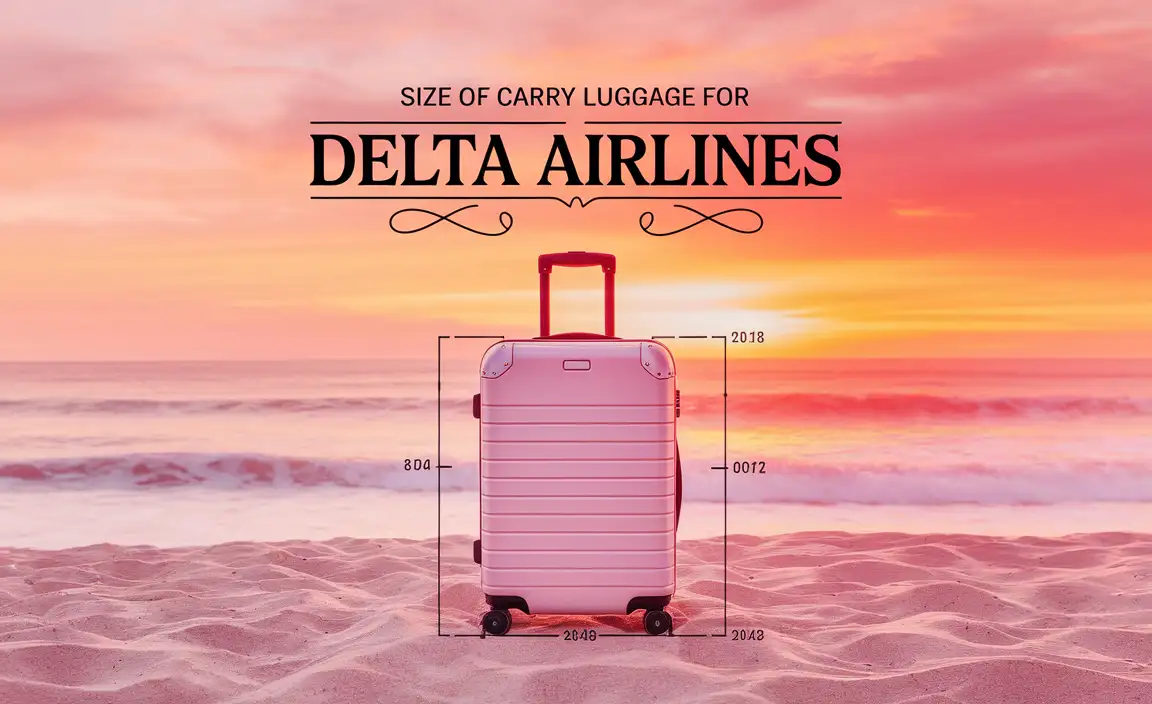Bangkok Accessible Travel Guide: Essential Tips to Navigate the City with Ease and Comfort. Discover practical advice, transportation options, accommodation tips, and essential resources for a smooth and enjoyable journey in Thailand’s vibrant capital.
Planning a trip to Bangkok can feel a little overwhelming, especially if you’re looking for ways to make your journey smooth and comfortable. Many travelers wonder if exploring this bustling city is truly possible with accessibility needs.
We understand that finding reliable information can be tough, leading to worry and last-minute stress. But don’t let that stop you from experiencing the magic of Bangkok! This guide is here to equip you with the essential tips and practical advice you need for an amazing, stress-free adventure. We’ll cover everything from getting around to finding the perfect place to stay.
Bangkok Accessible Travel: Your Essential Guide to a Seamless Experience
Bangkok, a city that buzzes with an energy unlike any other, offers a rich tapestry of culture, history, and mouthwatering cuisine. From ornate temples to bustling markets, there’s so much to explore. For travelers seeking accessibility, navigating this vibrant metropolis is more achievable than ever with the right preparation. This guide is designed to empower you with the knowledge to plan a comfortable and enjoyable trip, ensuring that the stunning sights and sounds of Bangkok are within your reach.
Understanding Accessibility in Bangkok
Bangkok is a city in constant evolution, and its accessibility is steadily improving. While some older areas and historical sites may present challenges, many newer developments, public transport systems, and major tourist attractions are making great strides in providing better access for everyone. It’s about knowing where to look and what to expect, and with a little planning, your visit can be incredibly rewarding.
Key Considerations for Accessible Travel in Bangkok:
- Infrastructure: Sidewalks can be uneven, and some areas may lack ramps. However, major roads and shopping areas are generally better maintained.
- Public Transport: The BTS Skytrain and MRT Subway are excellent options with many stations offering elevators and ramps.
- Taxis and Ride-Sharing: Readily available and can be a convenient way to travel door-to-door, though you’ll need to communicate your needs.
- Attractions: Major temples and attractions are increasingly accommodating, but it’s wise to check specific access details in advance.
- Accommodation: A growing number of hotels are offering accessible rooms and services.
Transportation: Navigating the City with Ease
Getting around Bangkok is a significant part of the adventure. Fortunately, there are several transport options that can cater to accessible travel needs, making it easier to reach your desired destinations.
The BTS Skytrain & MRT Subway: Your Best Friends
The BTS Skytrain and MRT Subway are often the most convenient and accessible ways to travel across large parts of Bangkok, avoiding the city’s notorious traffic jams. Most stations are equipped with elevators and lifts, and platforms are designed to minimize the gap between the train and the platform edge. Look for the blue wheelchair accessibility symbol on station maps.
- Wheelchair Accessibility: Many stations have elevators and ramps. Always look for the designated access points.
- Assistance: Station staff are usually helpful and can provide assistance boarding and disembarking.
- Coverage: These systems cover major tourist areas, shopping districts, and business hubs.
- Tip: Purchase a stored-value card (like the Rabbit Card for the BTS) for easier tap-and-go travel.
For more detailed information on station accessibility, you can check the official BTS Skytrain website and the MRT website, which often provide station details including elevator locations.
Taxis and Ride-Sharing: Door-to-Door Convenience
Taxis are plentiful in Bangkok and can be a good option for direct travel, especially when traveling with companions or requiring more personal space. Ride-sharing apps like Grab are also extremely popular and convenient.
- Booking: Use apps like Grab to book a car. You can often specify vehicle type and sometimes mention needs in the booking notes.
- Communicating Needs: Have key phrases or a translation app ready to communicate any specific requirements to your driver regarding boarding or seating.
- Vehicle Types: While standard sedans are common, some services may offer larger vehicles or those with more space.
- Cost: Taxis are generally affordable, especially compared to many Western cities. Metered taxis are preferred.
Accessible Van Services
For travelers who require specially adapted vehicles, pre-booking accessible van services is highly recommended. These services are designed to accommodate wheelchairs and offer greater comfort and security. Companies specializing in accessible tourism in Thailand can arrange these for airport transfers and day tours.
Example of Accessible Van Services:
| Service Type | Features | Booking Suggestion |
|---|---|---|
| Wheelchair Accessible Vans | Ramps or lifts, securement systems for wheelchairs, spacious interiors. | Book in advance through specialized accessible travel agencies or directly with providers. |
| Airport Transfers | Direct pick-up and drop-off, assistance with luggage. | Essential for a stress-free arrival/departure. |
| Day Tours | Customizable routes, assistance from drivers. | Ideal for exploring multiple sites comfortably. |
River Taxis and Ferries: A Scenic Route
The Chao Phraya River is a lifeline for Bangkok, and its express boats and ferries offer a unique perspective of the city. Accessibility can vary greatly on these services. Some piers are well-maintained with ramps, while others can be challenging. The Tourist Boat and Chao Phraya Express Boat are generally more accessible than local ferries.
- Main Piers: Major piers like Sathorn (Central Pier) for the BTS Skytrain connection are often better equipped.
- Boarding: Be prepared for potential gaps and steps. Crew members may offer assistance.
- Scenery: A great way to see landmarks like Wat Arun and the Grand Palace from the water.
Accommodation: Finding Your Accessible Haven
Choosing the right place to stay is crucial for a comfortable and convenient trip. Bangkok offers a wide range of hotels, and many are increasingly focusing on providing accessible rooms and facilities.
What to Look for in an Accessible Hotel Room:
- Roll-in Showers: Bathrooms designed with no curb and grab bars are essential.
- Wider Doorways: Ensure ample space for wheelchair maneuverability.
- Bed Height: Consider if the bed height is suitable for transfers.
- Lowered Fixtures: Sinks, light switches, and closets should be at accessible heights.
- Grab Bars: Strategically placed grab bars in the bathroom are a must.
- Emergency Alert Systems: Look for pull-cord alarms.
Booking Tips:
- Direct Contact: Always call the hotel directly or email them to confirm the specific accessibility features of the room you are booking. Do not rely solely on online booking descriptions.
- Photos: Ask for photos of the accessible room and bathroom to verify features.
- Location: Choose a hotel located near public transport hubs like BTS or MRT stations, or in areas with good accessibility.
- Hotel Chains: Larger international hotel chains often have more standardized accessible room designs and trained staff.
- Specialized Providers: Consider booking through travel agencies that specialize in accessible travel; they have partnerships with hotels and can verify accessibility.
Must-Visit Accessible Attractions
While some historical sites can be challenging, many of Bangkok’s most famous attractions are making significant efforts to be more welcoming to visitors with disabilities.
Temples and Royal Palaces:
The Grand Palace and Wat Phra Kaew (Temple of the Emerald Buddha) are iconic. While there are many steps and uneven surfaces within the temple grounds, the main paths and viewing areas are generally manageable. Wat Arun (Temple of Dawn) offers stunning river views and has accessible pathways around its base, though climbing the central prang may not be feasible.
- The Grand Palace: Many areas are paved and relatively flat. Staff are available to assist.
- Wat Pho (Temple of the Reclining Buddha): The grounds are mostly flat, and pathways allow good viewing of the iconic Buddha statue.
- Wat Arun: Accessible pathways around the base are available. Consider viewing from a river cruise for an easier experience.
Shopping and Modern Attractions:
Bangkok’s modern shopping malls are generally very accessible, featuring ramps, elevators, accessible restrooms, and ample space. These offer a comfortable and controlled environment to enjoy shopping, dining, and entertainment.
- Siam Paragon, CentralWorld, ICONSIAM: These malls offer excellent accessibility.
- Jim Thompson House: This museum showcases traditional Thai architecture. While some areas have steps, there are accessible routes to view much of the collection. It’s worth checking their current accessibility provisions.
- Markets: While vibrant, many markets like Chatuchak Weekend Market can be crowded and have uneven ground. Go during less busy times and be prepared for a more sensory experience.
Practical Tips for a Stress-Free Trip
Beyond transport and accommodation, a few extra preparations can go a long way in ensuring your trip to Bangkok is as smooth as possible.
Stay Connected and Prepared:
- Mobile Data: Purchase a local SIM card upon arrival. This allows you to use navigation apps, translation tools, and ride-sharing services easily via services like AIS, DTAC, or TrueMove H. You can get these at the airport or any 7-Eleven.
- Translation Apps: Google Translate or similar apps are invaluable for communicating with locals, especially helpful for understanding directions or any specific needs.
- Medical Needs: If you have specific medical requirements, such as needing adult or child diapers, ensure you pack an adequate supply from home, as specific brands might be hard to find. Alternatively, research local pharmacies or suppliers that might offer equivalent products for comfort and dignity during your travels.
- Hydration and Comfort: Bangkok can be hot and humid. Stay hydrated and wear light, breathable clothing. Consider bringing a portable fan or cooling towels.
Navigating Sidewalks and Public Spaces:
- Be Aware: Sidewalks can be uneven, have unexpected drops, or be used for parking. Always be vigilant; traveling with a companion can be very helpful.
- Patience is Key: Things may move at a different pace. Embrace it and enjoy the journey.
- Rest Stops: Look for cafes or public benches for breaks. Shopping malls offer excellent air-conditioned resting spots.
Cultural Etiquette:
Respectful behavior is appreciated everywhere. When visiting temples, dress modestly (shoulders and knees covered) and remove your shoes before entering. Use your right hand to give or receive items. A friendly smile and a polite “Sawasdee” (hello) go a long way.
When Every Detail Matters: Comfort Items
As Michael C. Herrera of Journey Essentials, I know that sometimes the most overlooked items make the biggest difference. For travelers who rely on personal care products like adult diapers or need specific solutions for children, ensuring comfort and dignity is paramount.
Packing for Confidence:
If you use adult diapers, child diapers, or other similar personal care products, it’s often best to bring a sufficient supply from home for your trip. Availability and brands can vary greatly internationally, and you don’t want to deal with the stress of finding suitable replacements while navigating a new city.
- Consider your needs: Pack enough for your entire trip, plus a few extra, just in case of unexpected delays.
- Discreet packing: Use resealable bags or packing cubes to keep them organized and discreet in your luggage.
- Accessibility for use: When you’re out and about, consider how you’ll manage these needs. Many modern shopping malls have clean and accessible restrooms. Always look for these facilities when you need them.
Focusing on these practical details allows you to relax and truly immerse yourself in the Bangkok experience. It’s about confidence and ensuring that your journey is as comfortable and enjoyable as possible, leaving you free to explore!
Conclusion
Exploring Bangkok is an enriching experience, and with the right approach, it’s fully accessible to a wide range of travelers. By utilizing the BTS and MRT, choosing accessible accommodation, and being mindful of the city’s landscape, you can navigate its vibrant streets with confidence and comfort. Remember to pack smart, engage with local resources, and don’t hesitate to ask for assistance. Your journey to the City of Angels promises to be filled with wonder, delicious food, and unforgettable memories. Safe travels!
Frequently Asked Questions (FAQs)
Q1: Is Bangkok a difficult city for wheelchair users to navigate?
A: Bangkok is becoming more accessible, but it requires planning. While newer infrastructure like the BTS and MRT are excellent, older areas and sidewalks can be challenging. Stick to accessible routes, use public transport wisely, and consider pre-booked accessible transport.
Q2: Are there accessible restrooms available in Bangkok?
A: Yes, many modern shopping malls, international hotels, and major tourist attractions have accessible restrooms. It’s harder to come by in smaller establishments or older markets.
Q3: Which transportation methods are most recommended for accessible travel in Bangkok?
A: The BTS Skytrain and MRT Subway are highly recommended due to their elevators and station infrastructure. Accessible taxis and pre-booked wheelchair vans are also good options for direct travel.
Q4: Do I need to book accessible accommodation in advance?
A: Absolutely. Accessible rooms are limited. It’s crucial to book well in advance and contact the hotel directly to confirm specific features and availability.
Q5: Can I find specialized adult or child diapers easily in Bangkok?
A: It’s generally recommended to bring your own supply from home. While large pharmacies might carry some options, finding specific brands or types can be difficult and stressful to manage during your trip.
Q6: Are tuk-tuks accessible?
A: Tuk-tuks are generally not accessible. They involve climbing in and out, have limited space, and can be bumpy rides unsuitable for many individuals with mobility challenges.
Q7: What is the best way to get from Suvarnabhumi Airport (BKK) to the city center for accessible travelers?
A: You can take the Airport Rail Link, which is accessible, or pre-book an accessible taxi or van service for a direct and comfortable transfer. The Airport Rail Link is a budget-friendly and efficient option.





